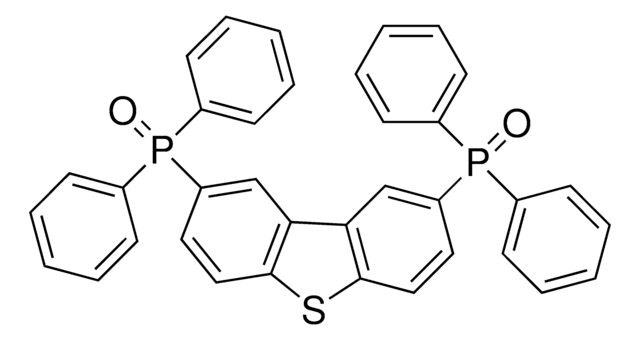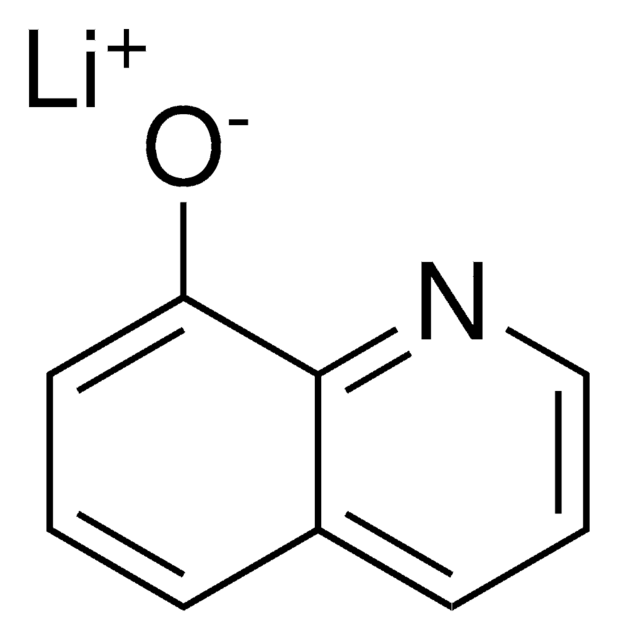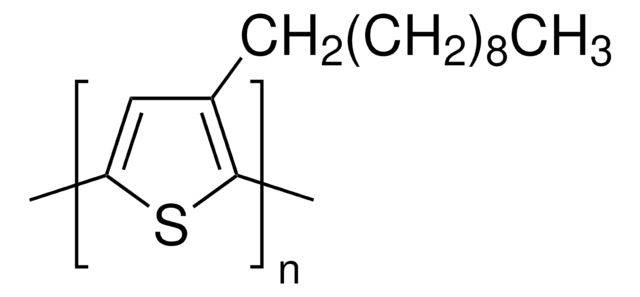推薦產品
化驗
97% (HPLC)
形狀
solid
mp
247-252 °C
λmax
306 nm in THF
SMILES 字串
Cc1cc(ccc1-c2ccc(cc2C)N(c3ccccc3)c4cccc5ccccc45)N(c6ccccc6)c7cccc8ccccc78
InChI
1S/C46H36N2/c1-33-31-39(47(37-19-5-3-6-20-37)45-25-13-17-35-15-9-11-23-43(35)45)27-29-41(33)42-30-28-40(32-34(42)2)48(38-21-7-4-8-22-38)46-26-14-18-36-16-10-12-24-44(36)46/h3-32H,1-2H3
InChI 密鑰
ZJFKMIYGRJGWIB-UHFFFAOYSA-N
尋找類似的產品? 前往 產品比較指南
一般說明
2,2′-Dimethyl-N,N′-di-[(1-naphthyl)-N,N′-diphenyl]-1,1′-biphenyl-4,4′-diamine (α-NPD) is a conducting polymer that can be used as a hole transporting material (HTM) with a transport gap of ~4 eV and an ionization potential of 5.5 eV.
應用
α-NPD can be used as a π-conjugated organic semiconducting material which has good charge transporting properties. It can be used in the fabrication of organic electronic devices such organic light emitting diodes (OLEDs) and organic solar cells (OSCs).
This material is used as a high performance host material for OLED devices showing increased device efficiency (maximum luminance efficiency was 4.4 cd/A at 9 V for the fluorescent device and 24.4 cd/A for phosphorescent device).
儲存類別代碼
11 - Combustible Solids
水污染物質分類(WGK)
WGK 3
閃點(°F)
Not applicable
閃點(°C)
Not applicable
分析證明 (COA)
輸入產品批次/批號來搜索 分析證明 (COA)。在產品’s標籤上找到批次和批號,寫有 ‘Lot’或‘Batch’.。
Impact of electrode contamination on the alpha-NPD/Au hole injection barrier
Wan A, et al.
Organic Electronics, 6(1), 47-54 (2005)
Optical band gaps of organic semiconductor materials
Costa JCS, et al.
Optical Materials, 58(1), 51-60 (2016)
Band alignment at organic-inorganic semiconductor interfaces: alpha-NPD and CuPc on InP (110)
Chasse T, et al.
Journal of Applied Physics, 85(9), 6589-6592 (1999)
Determination of charge-carrier transport in organic devices by admittance spectroscopy: Application to hole mobility in alpha-NPD
Nguyen ND, et al.
Physical Review. B, Condensed Matter and Materials Physics, 75(7), 075307-075307 (2007)
Tsai; Y.- S.; et al.
Thin Solid Films, 517, 5338-5338 (2009)
文章
Highly reducing or oxidizing species enhance organic semiconductor conductivity by reducing charge-carrier injection barriers.
我們的科學家團隊在所有研究領域都有豐富的經驗,包括生命科學、材料科學、化學合成、色譜、分析等.
聯絡技術服務






